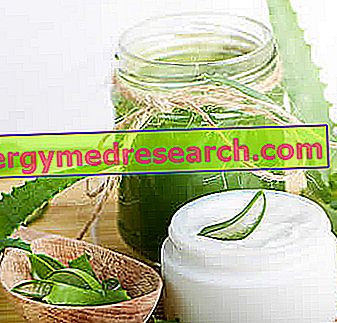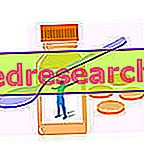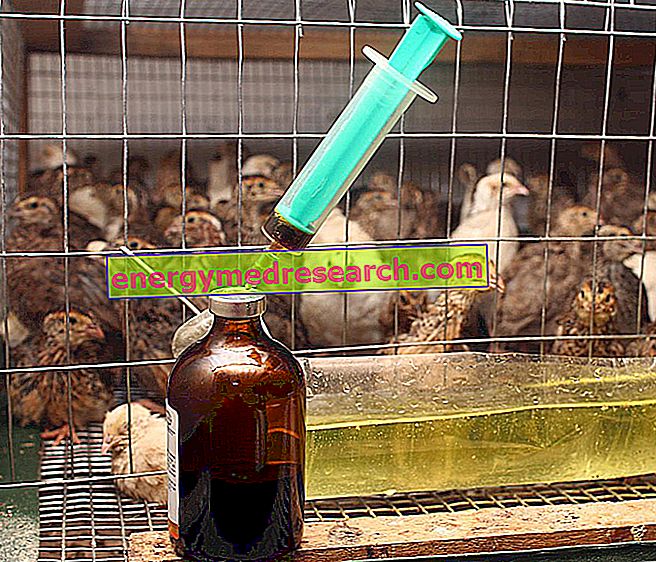What is Seborrhoeic Dermatitis
Seborrheic dermatitis reflects a rather common condition, a chronic recurrent disease that mainly affects the scalp. For this reason, it is very difficult to eradicate the disorder, and the chances of a total resolution are very low. Despite the premises, a specialist can definitely direct the subject to a useful therapy to lighten the seborrheic manifestation, controlling symptoms such as itching, discomfort, irritation and inflammation, with unctuous skin scales and yellow scabs definitely anti aesthetic.

Supply
Seborrheic dermatitis and diet
As mentioned, in most low-level skin disorders, nutrition plays an important role: a diet rich in saturated fats and sugars could, in fact, be able to enhance the pathological condition if seborrheic dermatitis is already underway . In addition to sugars, it also appears that leavened products and dairy products may in some way be involved in a possible worsening of the disease.
It is a good habit to consume oily fish, rich in polyunsaturated fatty acids (omega 3, in particular), which contribute, in part, to alleviating the problem.
Bad habits
Usually, a person suffering from seborrheic dermatitis has the habit of constantly stroking the hair, a habit that is certainly appreciated by those who perform it, but certainly not by the hair: as far as the hands can be cleaned, in fact, a layer of natural fat is always present . Touching the hair with your hands, the fat moves there and the result will be a noticeable weighting of the hair. This custom should be avoided, especially by individuals with seborrheic dermatitis, as it worsens the disorder, or favors it.
Another decidedly wrong habit is to resort to too frequent and excessively aggressive washes in an attempt to remove the greasiness that characterizes the scalp of those suffering from seborrheic dermatitis. This bad habit, in fact, instead of solving the problem, will only make it worse, further irritating the skin that is already very sensitive in itself. If necessary, the doctor will prescribe lotions and shampoos based on certain active ingredients that can help the patient reduce the typical manifestations of this skin disorder.
drugs
Drugs against Seborrhoeic Dermatitis
For more information: Medicines for treating Seborrheic Dermatitis
The pharmacological therapy of seborrheic dermatitis mainly uses drugs to be used topically (shampoos, creams, gels, etc.) directly on the areas affected by the disorder, even if, in the most serious cases, the doctor could prescribe the use of medicines. orally.
However, as mentioned, for patients suffering from seborrheic dermatitis it is possible to use medicated shampoos and lotions to alleviate the symptoms caused by the disorder. The main active ingredients used in these cleaning products are zinc pyrithione, selenium sulfate and salicylic acid. Generally, these products can also be purchased without a prescription, however, the doctor's advice is always essential.
Even the use of corticosteroid drugs certainly has important applications in the treatment of seborrheic dermatitis, especially if related to hair loss, acting mainly as an anti-inflammatory: it can be bought in pharmacies, even without a prescription, but the opinion of the doctor is always fundamental.
Some specialists believe that in the presence of seborrheic dermatitis the use of antifungals is suitable, since it is believed that the fungus Malassezia furfur can represent one of the contributing causes, if not the main cause, for the development of this disorder. On the other hand, other dermatologists consider the use of these drugs useless: this is why medical consultation is always essential, since every subject can present the problem under different facets.
Herbal Remedies
Herbal medicine also offers a variety of natural remedies that act primarily as eudermic, anti-inflammatory and sebum-regulating.
We will now analyze two models of herbal products: the first remedy is to be taken topically, therefore, it must be applied directly to the area of skin affected by the manifestations of seborrheic dermatitis; while the second natural remedy (operculum) performs its action at a systemic level and is, therefore, to be taken orally in order to counteract the disorder from the inside, providing - at the same time - a support to natural therapy by topical way.
Natural pomade
The main ingredients of a natural oleaginous ointment with flammable, emollient and re-epithelizing properties are illustrated below.
- Borage oil ( Borago officinalis ): topically applied, borage oil "revives" damaged skin, thanks to the presence of linoleic acid and gamma linolenic acid. The phytocomplex is useful in skin diseases in general, especially in allergic manifestations; it is also suitable for formulations designed to calm the itching derived from seborrheic dermatitis. For the same reason, borage oil could be replaced with sweet almond oil ( Prunus dulcis ), with anti-inflammatory and emollient properties, or with essential oil of Melaleuca ( Melaleuca leucodendor, from which the best-known tea tree oil, or Cajeput oil is obtained), with antiseptic and invigorating activities. The essential oil contains pinene, cineol and terpineol, and niaouli oil.

- Echinacea ( Echinacea pallida): it is the immunostimulant drug par excellence, thanks to the abundant quantity of echinacoside and compounds of phenyl-propanoid derivation (caffeic acid, quinic acid, cinnamic acid). Echinacea is also known for its antibacterial and antimicrobial properties made by terpenes, low molecular weight molecules. It is used in creams and ointments for skin disorders, including psoriasis and seborrheic dermatitis.
- Incense : derived from plants belonging to the genus Boswellia . Although the use of incense is sought especially for religious cults, the drug also has antimicrobial, stimulating and revitalizing properties. In addition, it is used as a healing and immunostimulant, enhancing the activities expressed by echinacea: in this regard, it is configured an excellent natural remedy against seborrheic dermatitis.
- St. John's wort ( Hypericum perforatum) if echinacea is the emblem of immunostimulant drugs, hypericum is the symbol of drugs with cicatrisation-vulnerary activity. In particular, the anthraquinones present (which have no laxative activity, unlike all the anthraquinone plants) stimulate the cicatrizing activity (hypericin), while the flavonoids repair damage to the skin, and the tannins express antiseptic activity in synergy with the anthraquinones.
Natural Capsules
A natural product formulated in the form of operculum serves to defeat the disorder created by seborrheic dermatitis from the inside, not only in the skin. In fact, the body feels the need to be cleansed of waste and toxins, so a product with dandelion, fumaria and burdock is useful in enhancing the ointment for topical use described above.
In this regard, the herbalist expert should understand the patient's disorder and recommend it in the choice of the most suitable formulations to lighten seborrheic dermatitis.
- Dandelion ( Taraxacum officinale ): the phytocomplex is characterized by the presence of caffeic acid and the resulting molecules. Fencone and anethole attribute to the drug purifying properties of the skin. For this reason, the dandelion is a good remedy to counter the typical impurities of seborrheic dermatitis.
- Fumaria ( Fumaria officinalis ): it is a plant particularly indicated for the treatment of seborrheic dermatitis. It is characterized by about thirty alkaloids - including protopine and fumarina - which promote antiallergic and anti-inflammatory activity (in this regard it is also used to treat disorders related to allergic dermatitis). In the phytocomplex there are also potassium salts and fumaric acid, which act with tonic-purifying properties, suitable for treating cutaneous disorders in general. The active ingredients also perform their action even at the biliary and renal level, thanks to the choleretic and diuretic activity.

- Burdock ( Arctium lappa ) is another natural remedy that promotes the correct physiology of the skin, thanks to the purifying and decongestant properties made by sesquiterpenes, polyacetylene sulfonates, caffeilchinici (cloregenic acid) and inuline (diuretic) acids: for this reason, the drug it is suitable for treating disorders linked to seborrheic dermatitis and is therefore defined as an "endocosmetic". Furthermore, for internal use, it stimulates liver and pancreatic function, favoring digestion.
Please note
Before resorting to any type of natural remedy for the treatment of seborrheic dermatitis, it is always good to ask for the preventive advice of your doctor or your dermatologist, in order to exclude the presence of any contraindications or potential risks for the patient himself.





